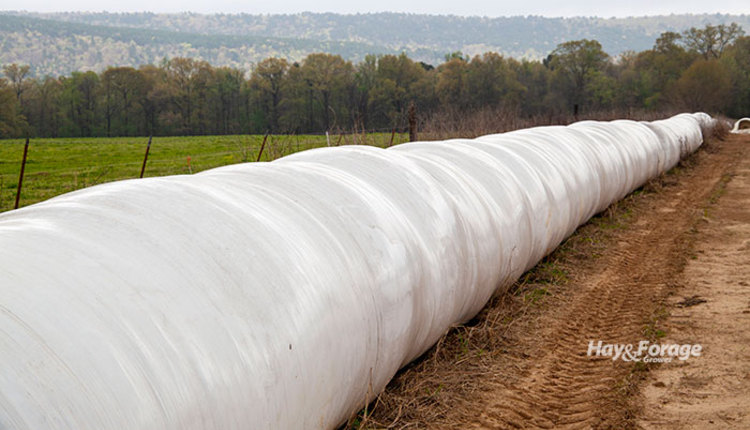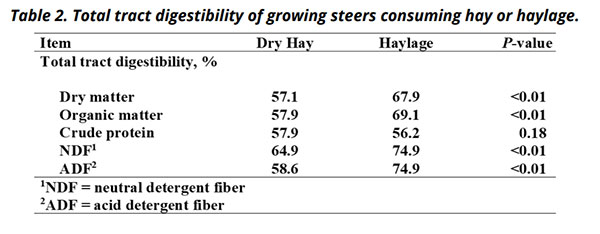
In theory, feeding hay is a sound solution to supplement fall grazing or provide animals with winter feed. Timely harvests can result in high-quality forage, and proper baling and storage preserves nutrients like energy and protein. But hay quality is never guaranteed.
Darren Henry with the University of Georgia suggests one of the biggest risks of making hay is rainfall between cutting and baling. In his region of the Southeast, unpredictable weather patterns make it difficult to ensure a sufficient drying period.
“When trying to bale hay at 10% to 15% moisture, a shower from the West can add a few days of drying and nutrient loss to an otherwise successful cutting,” the assistant professor of animal and dairy science states. “With this in mind, many producers are considering wrapping their cut forage at about 60% moisture and allowing that forage to ferment, creating haylage.”
Making haylage is a proactive measure to counter Mother Nature. Moreover, haylage can have similar or improved quality compared to dry hay. To investigate the latter point, Henry and a team of researchers conducted a study to evaluate the organic matter intake and total tract digestibility of nutrients of the two types of feed in beef steers.
Here’s what they did
The study used 16 Angus steers and 14 Brangus steers with an average body weight of 538 pounds. These cattle were randomly assigned to two feed treatments — ryegrass hay or ryegrass haylage — and both diets were fed ad libitum. Henry notes this was done to see if one breed utilized forage more efficiently than the other.
The ryegrass hay in the experiment was 89.7% dry matter, whereas the ryegrass haylage was 51.2% dry matter. Percent organic matter was roughly 90% for both feeds, and crude protein levels were 12.4% and 11.9% for hay and haylage, respectively.
Fiber content was also similar in the hay and haylage. Neutral detergent fiber was about 69% for hay and 68% for haylage. Moreover, acid detergent fiber was approximately 41% and 42% for hay and haylage, respectively. Overall, total digestible nutrients values were 56.9% for hay and 56.2% for haylage.

Improved intake
The steers that received haylage consumed nearly 3 pounds more of feed per day than the steers that received dry hay. Henry says Angus cattle had higher feed intakes than Brangus cattle, but there was no correlation between breed and nutrient digestibility. Conversely, there was a difference between the type of feed and nutrient digestibility.
“Dry matter and organic matter digestibility was 19% greater for steers consuming haylage compared to hay,” Henry explains. “The digestibility of dry matter and organic matter was improved largely due to the 21% increase in total tract digestibility of neutral detergent fiber.”

These results contradict what researchers expected. “Very often, when an animal has greater dry matter intake, such as the steers consuming haylage, digestibility is consequently reduced,” Henry says. “We found the opposite occurred for these steers.”
He offers one explanation for this could be the “softening” of fiber in haylage due to fermentation. Another reason could be a shorter lag time of microbial attachment to fiber. Nonetheless, Henry recommends considering the benefits of better nutrient digestibility in haylage against the added costs of this type of production.

Amber Friedrichsen served as the 2021 and 2022 Hay & Forage Grower summer editorial intern. She currently attends Iowa State University where she is majoring in agricultural communications and agronomy.

